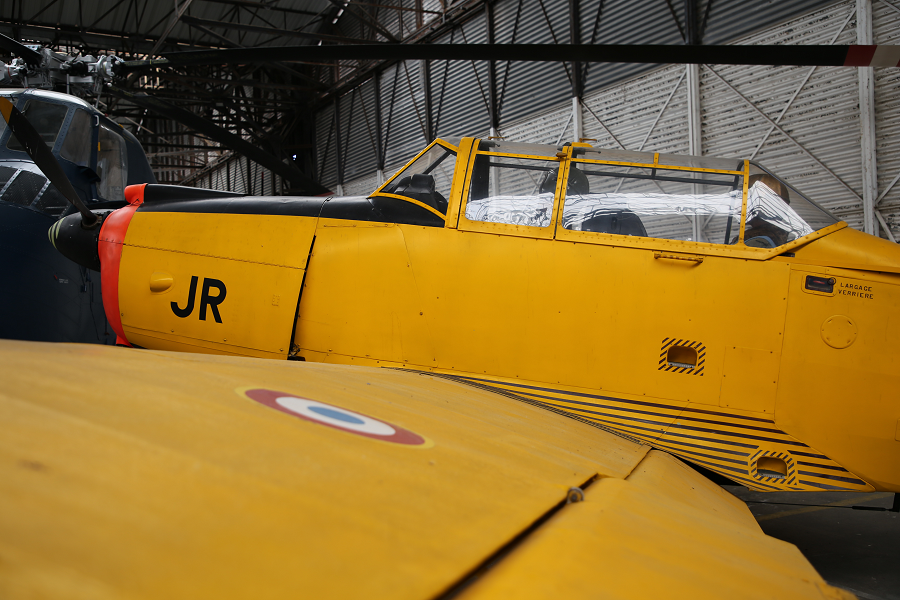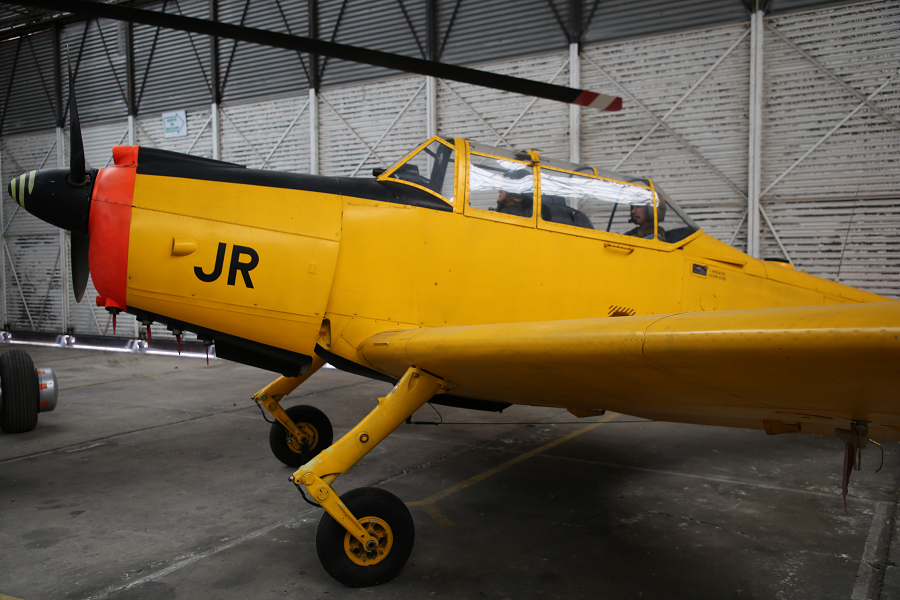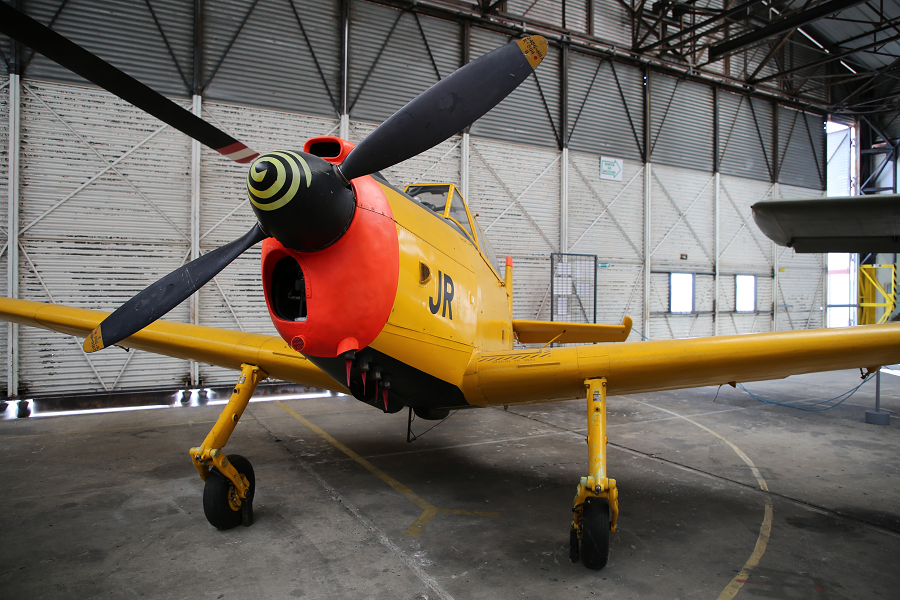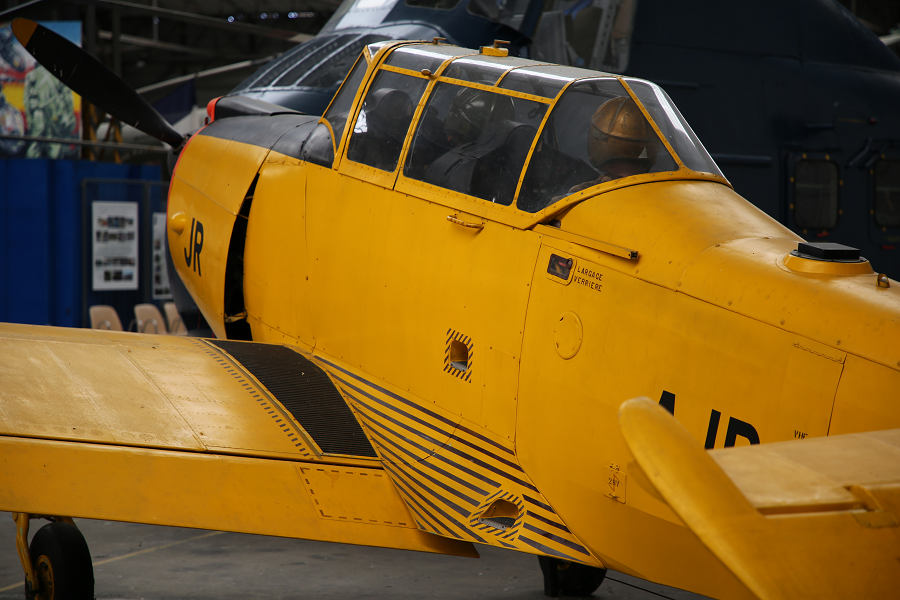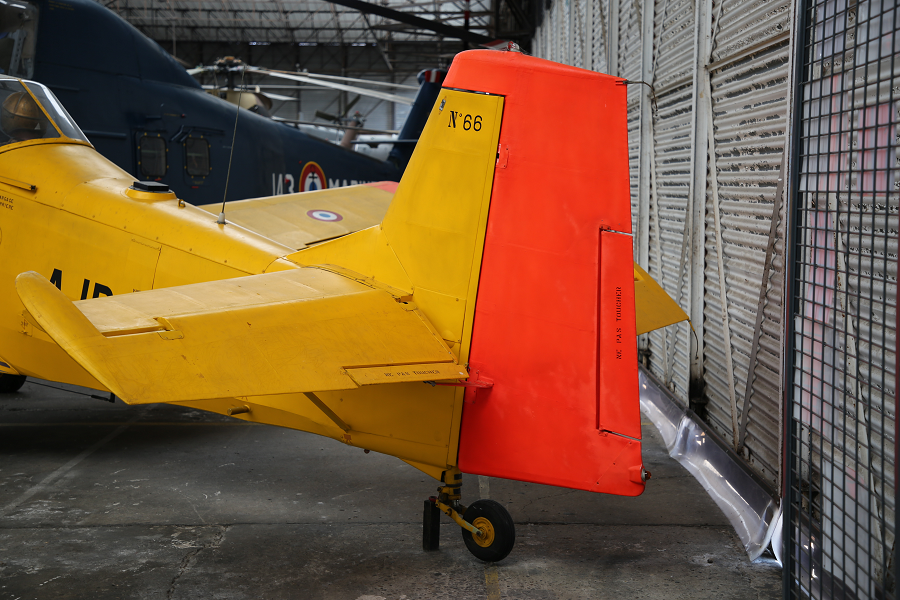The Nord Aviation 3202 was a 1950s French military trainer aircraft designed and built by Nord Aviation to meet a French Army requirement for a two-seat basic trainer, as a replacement for the biplane Stampe SV.4. Altogether, 101 examples were built, with the first flying on 17 April 1957.
The 3202 was a cantilever low-wing monoplane with a fixed tailwheel landing gear and a nose-mounted inline piston engine. It had an enclosed cockpit for pupil (front) and instructor (rear) in tandem.
The Nord 3202 was used as a military training aircraft. After retirement from military use, many examples were sold to the civilian market, including several now (2012) flown in the United States.
General characteristics
Crew: 2
Length: 8.12 m (26 ft 8 in)
Wingspan: 9.50 m (31 ft 2 in)
Height: 2.82 m (9 ft 3 in) in flying attitude
Wing area: 16.26 m2 (175.0 sq ft)
Empty weight: 824 kg (1,817 lb)
Gross weight: 1,220 kg (2,690 lb)
Powerplant: 1 × Potez 4D-32 four-cylinder air-cooled inline engine, 180 kW (240 hp)
Propellers: 2-bladed Ratier Type 23-92, 2.25 m (7 ft 5 in) diameter adjustable-pitch propeller
Performance
Maximum speed: 260 km/h (160 mph, 140 kn)
Cruise speed: 195 km/h (121 mph, 105 kn)
Stall speed: 83 km/h (52 mph, 45 kn)
Range: 1,000 km (620 mi, 540 nmi)
Wing loading: 75 kg/m2 (15 lb/sq ft)
Power/mass: 0.197 kW/kg (0.120 hp/lb)
Nord-Aviation was a state-owned French aircraft manufacturer. The bulk of its facilities were based on the site of Bourges airport, in the département of Cher, in central France.
On 1 October 1954, Nord Aviation was created as a result of the acquisition of SFECMAS (Société française d’étude et de construction de matériels aéronautiques spéciaux) by SNCAN (Société nationale de constructions aéronautiques du Nord). The company’s name, Nord, also became commonly used as a generic name referring to the Pingouin light aircraft. It manufactured numerous aircraft; perhaps Nord Aviation’s most successful aircraft was the Nord Noratlas, a utility transport used by both military and civilian customers. Other aircraft included general aviation, trainers and experimental aircraft, as well as other transports. Nord Aviation also developed and produced its own range of missiles; perhaps the most famous of these was the Exocet, a sea-skimming anti-ship missile.
On 1 March 1970, Nord Aviation merged with Sud Aviation to create Société nationale d’industrie aérospatiale (SNIAS), which was promptly renamed Aérospatiale. In 2000, this company merged into European Aerospace Corporation EADS, which was then renamed to the Airbus Group.



